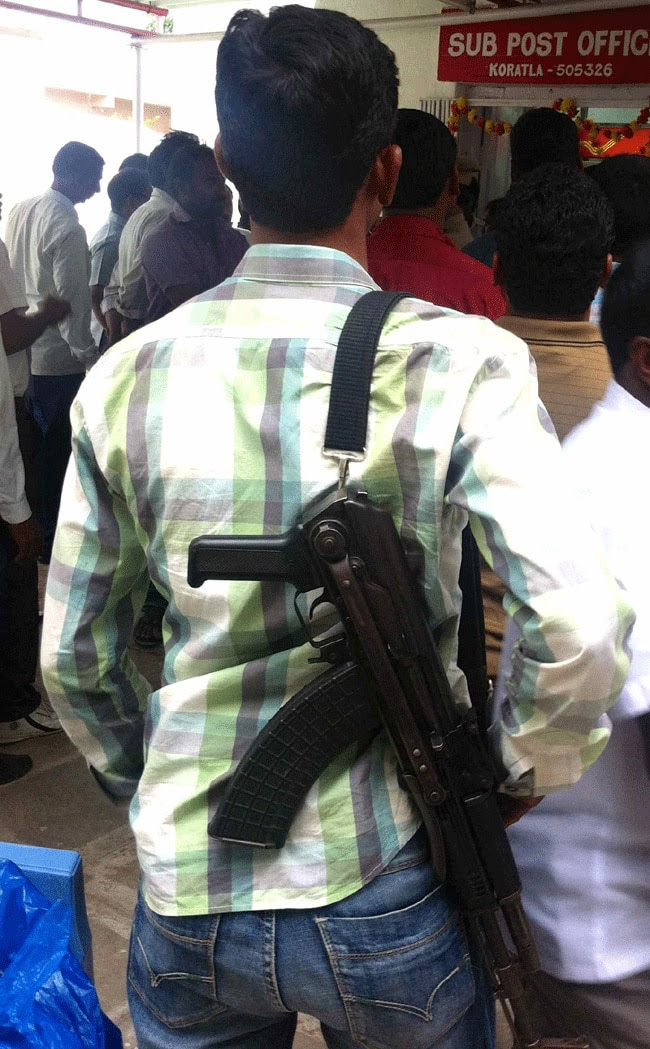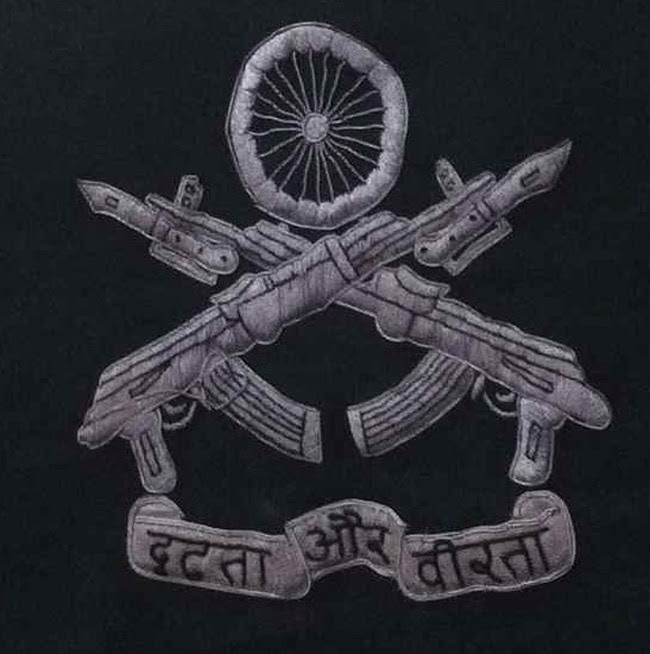Why General Kalashnikov couldn't sell the AK in India
Sandeep Unnithan New Delhi, December 30, 2013 | UPDATED 17:05 IST

Indian army soldiers with Romanian AK-47s in Srinagar. Photo: Sandeep Unnithan.
General Kalashnikov visited India only once, in February 2004 where he kicked up a row. The star attraction at Defexpo, a biennial defence exhibition in the capital, was being escorted around the stalls at Delhi's Pragati Maidan. He stood transfixed at the Indian Ordnance Factory board pavilion. On display there was a knock-off of his assault rifle with its distinctive banana shaped magazine. The pretense was so thinly veiled that the weapon was even called the 'AK-7'. The general made his disgust known. The OFB had illegally copied his design. His protest had an instant impact. OFB shelved the AK-7. Izhmash, the Russian factory that has produced the rifle since it was accepted for service in 1947, however did not pursue the copyright violation. Andrey Vishnyakov, Izhmash's fast-talking sales manager told me it was purely business. Russia hoped to sell the OFB the rights to make genuine AK-47s. Roughly two-thirds of India's military hardware, MiG fighters, T-72 tanks and Kilo-class submarines, were of Soviet origin.
What had baffled the arms factory executive was that India had however not purchased the pinnacle of Soviet engineering design, the ruggedly simple AK-47 from Russia. They had instead, Vishniyakov told me ruefully, bought poorer cousins made in the Eastern Bloc. The Soviet Union had aggressively exported AK designs along with its ideology. But had not patented the design as rigorously. Now, its capitalist successor, the Russian Federation, felt the pinch from over a dozen countries that continued to manufacture the rifle.

An Andhra Pradesh police commando with a Bulgarian-made AK-47. Photo: Sandeep Unnithan.
The Indian army had discarded its bolt-action .303 Lee Enfield rifle after the debacle of the 1962 war. The venerable rifle had been outgunned by Chinese variants of the AK rifles. The Belgian FN-FAL L1A1 7.62 mm Self Loading Rifle license produced by the OFB since the 1962 war was obsolete by the 1980s when the Indian army found just why militants in Punjab, Kashmir and Tamil Tigers in Sri Lanka favored the AK-47. Optimized for close range combat, light, easily-concealed, its tremendous firepower of over 600 rounds a minute, leveled the playing field for inferior forces. The rifle was rugged and required little maintenance and survived after being buried in muddy fields and immersed in water. These were lessons the US army had come up against fighting in Vietnam in the 1960s. But while the US replaced the bulky, self-loading M14 with the lighter M16 in the early years of Vietnam, the DRDO-designed indigenous Indian Small Arms Systems or INSAS assault rifle that promised deliverance, was still years away from induction in the 1980s. The Indian army looked at short term solutions. It equipped itself with some of over 12,000 AKs it had captured from insurgents in the mid-1990s. Many of these captured weapons were ironically, made in Russian factories like Izhmash and Tula.

The Rashtriya Rifles unit insignia. Photo: Sandeep Unnithan.
The army then turned to Romania, Bulgaria and erstwhile Czechoslovakia that made cheap AK variants. Among the first AKs purchased for the Indian army were the Czech-made VZ-58, an assault rifle that outwardly resembled the AK.
The rifle also filtered into Indian folklore. Sanjay Dutt was first jailed for possessing an 'AK-56' in 1993 (actually, a Norinco Type-56, the Chinese variant of the AK). The Rashtriya Rifles, an army formation that fights insurgency in J&K since 1990, has two crossed AK-47s as its unit insignia. Despite the induction of the indigenous INSAS rifle after the Kargil war in 1999, Indian army units in militancy affected regions continue to be equipped with the AK. India continues to be one of the world's largest importers of AK-type rifles. Again, these weapons aren't from Kalashnikovfactories in Russia but from Bulgaria. The home ministry has bought over 100,000 Bulgarian-made AKs in the past decade to equip police and paramilitary units.

AK-47s manufactured in Russia and China captured by the Indian army from infiltrators in the Keran sector in October this year. Photo: Sandeep Unnithan.
Experience discreet recording with Spy World's spy audio recorder in Rajiv Chowk. Capture high-quality audio without detection. Visit us today for the best spy gadgets!
ReplyDelete